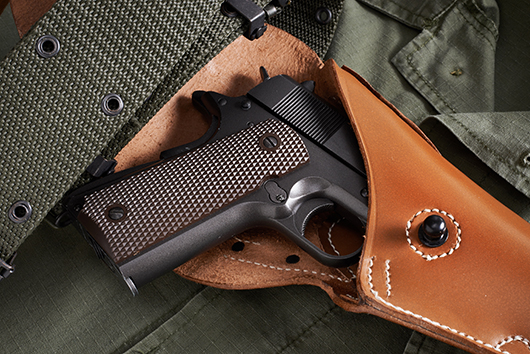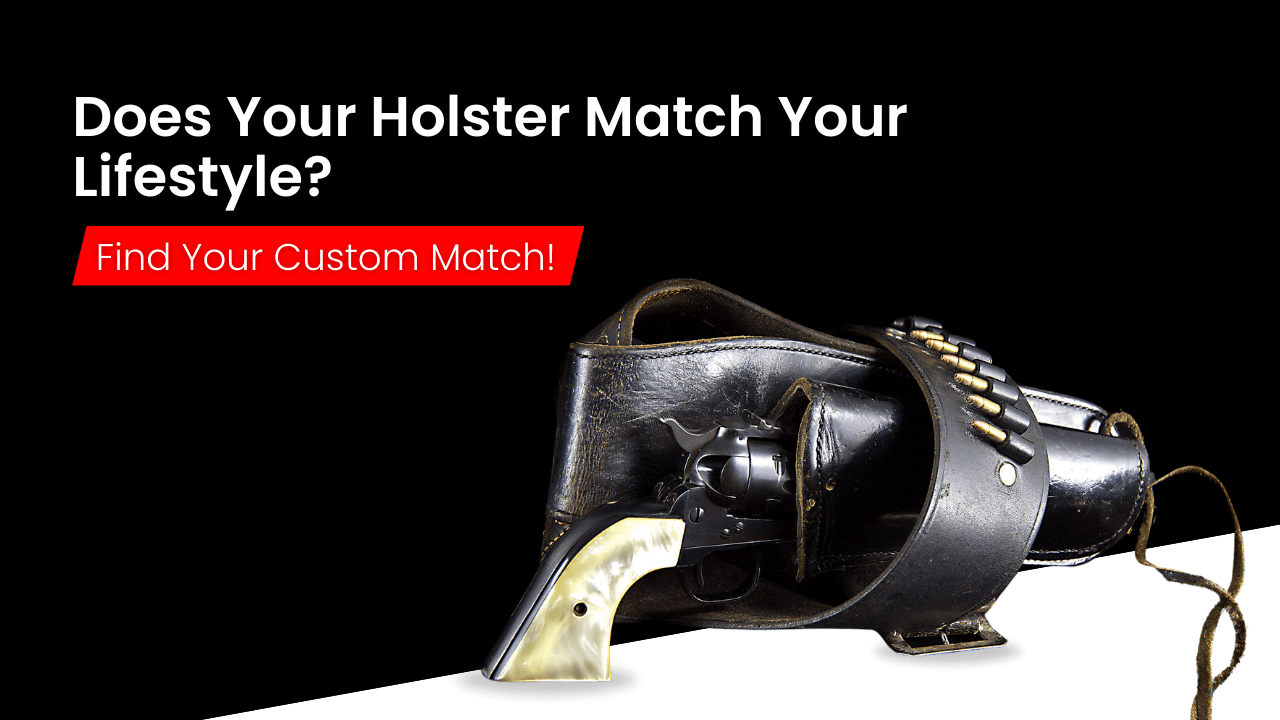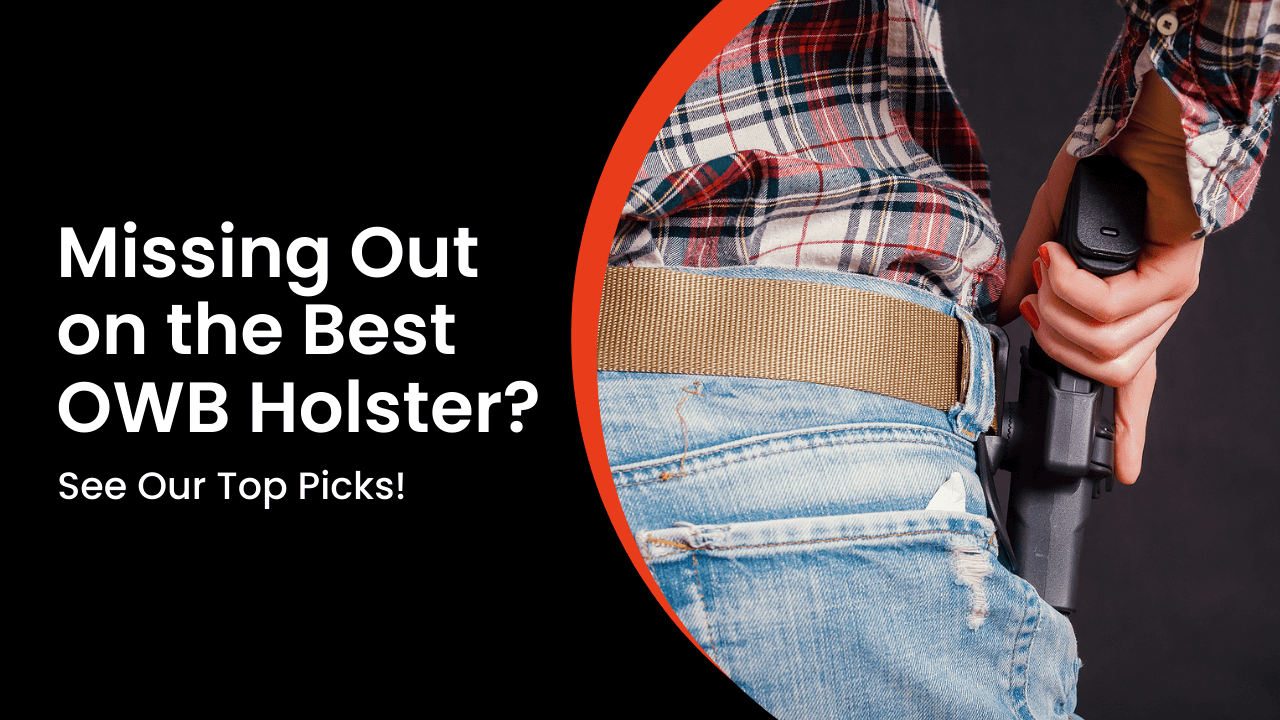What’s the Best Gun Belt for IWB Carry?
Mar 3rd 2021
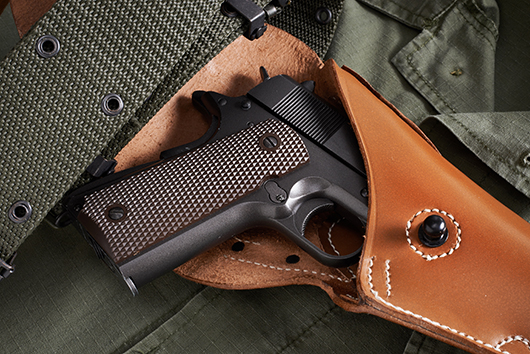
When carrying a firearm for self-defense, you need a high-quality, reliable gun that you can shoot accurately. It’s also critical that you have a high-quality holster to carry it securely, safely, and in a way that provides quick access when you need it.
An often-overlooked accessory that can make a significant difference is a good gun belt. Without a gun belt, you would have no way of securely wearing a waistband holster, limiting your carry options. However, not all gun belts are created equal.
Why is a Gun Belt Essential?
Unless you intend to use a non-waistband holster, a gun belt is a necessity. A good gun belt should provide the following:
Security
IWB and OWB holsters that use belt loops or clips provide unparalleled retention, ensuring that your holster remains firmly attached at all times. Even paddle holsters, which enable rapid dismounting, require a sturdy gun belt to work correctly. For a safe and secure carry option, the holster and belt need to work in conjunction with each other.
Stability
A good belt provides a stable platform for carrying, drawing, and reholstering. A stable belt shouldn’t sag, and a well-designed holster should evenly distribute the gun’s weight. Together, they provide a stable platform from which you can draw your weapon and reholster it after the action dies down.
You should be able to do both without causing excessive movement of your holster downward or upward. This may be less of a factor when carrying a subcompact handgun, such as a Glock 43 or SIG P365. However, if you carry a full-size combat handgun, steel-framed, or with a double-stack magazine, your belt’s ability to balance the weight without sagging is critical to concealability and a reliable draw stroke.
Durability
A regular belt may not stand up to the rough handling of attaching and dismounting a holster and may wear out faster from practice drills. It needs to be sturdy enough to support your carry gun’s weight and endure constant drawing and reholstering without becoming loose or deforming. A tight-fitting gun holster can also strip the surface of some dress belts.
Accessories
A belt supports your weapon and allows you to carry accessories, from additional magazines to lights and knives. This may be especially beneficial if you carry a relatively low-capacity firearm, such as a subcompact (or full-size) handgun with a single-column magazine.
Even if you carry a standard- or high-capacity pistol, magazine carriers can provide peace of mind by augmenting the firepower of your defensive weapon. You may also decide to add to your preparations by carrying a miniature emergency trauma kit. A belt facilitates all of these functions.
OWB and IWB
OWB and IWB abbreviations, common in the firearms community, stand for Inside the Waistband and Outside the Waistband.
OWB holsters are also called belt holsters and attach using loops or clips to your belt, sitting outside your trousers. OWB holsters are useful for open carry where concealment is not critical, but you can also conceal them if you’re wearing a cover garment. If you live in an open carry jurisdiction or just want a holster for when you’re at home or walking around on your property, an OWB holster is an excellent choice.
You wear an IWB holster between your body and your waistband, typically using clips that fit over your gun belt. This type of holster is ideal for concealed carry, particularly deep concealment. While those who carry IWB often choose compact or subcompact firearms for increased comfort, this method also works well with full-size service handguns.
Holster Positions
Before you can determine the best kind of gun belt and holster for your needs, decide how you intend to carry your weapon. When imagining waistband carry, it’s common to envision the face of a clock.
Gun owners often refer to 12 and 1 o’clock (appendix, right-handed), 3 o’clock (strong side, right-handed), and 6 o’clock (small of back). Each carry position has its benefits. Experts recommend trying each position for comfort and usability to determine which one works best for your lifestyle, body type, and other factors.
Some of the most popular waistband carry locations include:
Strongside
Depending on which of your hands is dominant, your right or left hip is one of the most popular positions in which to carry a firearm. There’s a reason a service handgun is called a sidearm: This is a highly natural carry position for many gun owners and allows for a reasonably fast draw. It also enables you to rotate your body, use your support hand for defense and keep a threat at arm’s length while drawing your weapon.
However, it’s also one of the most challenging positions to draw from while seated in a vehicle, especially when you factor in the seatbelt.
Appendix
While not as popular as strong-side carry, many gun owners prefer appendix carry due to the speed it affords them. By placing the weapon in the front of your pants, you can conceal it effectively and draw it rapidly.
However, if you have a pronounced beltline, this may not be the ideal position for you. Furthermore, while appendix carry is perfectly safe if you practice firearms safety diligently and use a high-quality holster, the risk of death or serious injury is greater if you experience an unintentional/negligent discharge.
Crossdraw
In this position, your handgun is situated on your support side with its butt forward or facing your dominant side. Its muzzle is usually pointed away from you, typically at a downward angle. If you’re a right-handed shooter, you’ll carry the gun on your left side and reach across your abdomen to draw it. This can be a fast position, especially when seated. As a result, it can be advantageous for people who lead largely sedentary lifestyles, from an individual who uses a wheelchair to a professional driver.
Small of back
This carry position has its proponents and detractors. This is a highly concealable position, the inverse of appendix carry. It allows your clothing to drape over the holster and pistol, and its proximity to the arch of your back can hide it well.
However, because the weapon is pressed against your spine, if you fall or are struck from behind, this can cause serious injury. Your draw stroke is less intuitive than the other positions, and the pistol is less accessible to your support hand.
Other Factors to Consider
Some gun owners disregard comfort, thinking that this is a non-essential criterion for a gun holster or gun belt. Unfortunately, if your belt is uncomfortable, you’ll be less likely to wear it. The same is true of gun holsters, which is why it’s so important not to dismiss the importance of fit and feel.
The purpose of IWB is concealed carry, but concealment isn’t limited to hiding your weapon. If you want your armed status to remain undetected, it’s important to remember that tactical clothing, including your gun belt, can be a dead giveaway that you’re either carrying a gun or own a gun. You must select your clothing to enhance discretion, using long shirts and coats or tactical wear that looks like regular shirts and pants.
Types of Gun Belts
The best gun belt depends on a number of factors, including your personal preferences, method of carry, and carry position.
One of the first criteria for selecting a gun belt should be sufficient width to accommodate a gun holster and keep it secure. Typically, dedicated gun belts have a width of 1.5 inches, but they are also available in 1.75 inches. Ideally, a gun belt should also complement your wardrobe or professional dress code.
Depending on whether you’re carrying openly or concealed, discretion is also a factor worth considering. However, if you’re carrying IWB, you don’t want to disclose the fact that you’re armed.
EDC Tactical Belt
One of the most popular choices for concealed- and open-carry is the EDC Tactical Belt, a nylon webbing belt that companies often pair with a quick-release Cobra buckle. These nylon belts are durable, waterproof, and can support the weight of a full-size firearm and accessories, such as magazines or lights. Unfortunately, if your priority is discretion, the tactical appearance of these belts can be a handicap.
Rigger’s Belt
Similar to the EDC Tactical Belt, the Rigger’s Belt is a nylon web belt. However, the rigger’s belt uses dual layers of nylon webbing in many examples and can be considered a heavy-duty alternative.
Many rigger’s belts use quick-release Cobra buckles and robust hardware for dependable attachment. You’ll often also see V-rings on them. This type is capable of supporting a considerable amount of weight and serves as an excellent companion to a heavy magnum revolver.
Unfortunately, rigger’s belts are not compatible with many clothing choices, as these belts require larger belt loops — 1.75 inches. As a result, these belts are less discreet.
Leather Belt
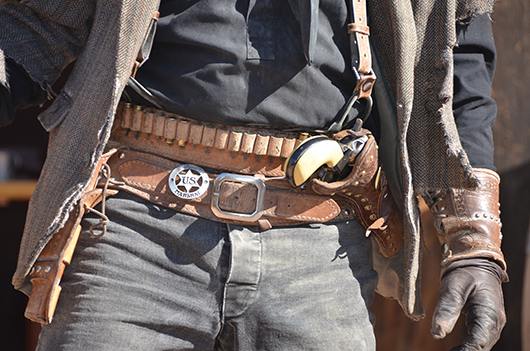
The leather gun belt with a metal buckle is common for work, competitive shooting, self-defense, and other applications where a heavy-duty option is critical. One of the advantages of a leather belt, aside from style and comfort, is discretion. Many leather gun belts are indistinguishable at a casual glance from regular belts for office work.
Don’t be fooled by the tinner varieties designed for dress clothing — a belt thinner than 1.5 inches does not provide the same level of support. A thick leather belt can serve as a duty belt or, with cartridge loops and ornate needlework, the perfect gun belt for Cowboy Action shooting competitions.
Off-Body Carry
There’s also the question of so-called off-body carry. While everyone’s circumstances are different, you should avoid off-body carry if you can. Keeping your firearm in a location away from your person, such as in your vehicle or in a backpack, renders it less accessible when it’s vitally needed. If you decide to carry it in your purse, you increase your risk of having your weapon stolen.
However, not everyone can decide to carry their firearm on them. If, for example, you’re physically disabled or the conditions of your employment do not permit you to carry a weapon, you may have to find a workaround.
Final Thoughts
At Incognito Concealment, designing state-of-the-art Kydex holsters to suit a wide variety of concealed and open carry applications is our mission. But even the best IWB holster needs a good belt to remain accessible and secure.
Give us a call at (586) 999-5820, and we’d be happy to help you decide what type of gun belt you should purchase to accompany your new Kydex holster. Our products have a limited lifetime warranty.

